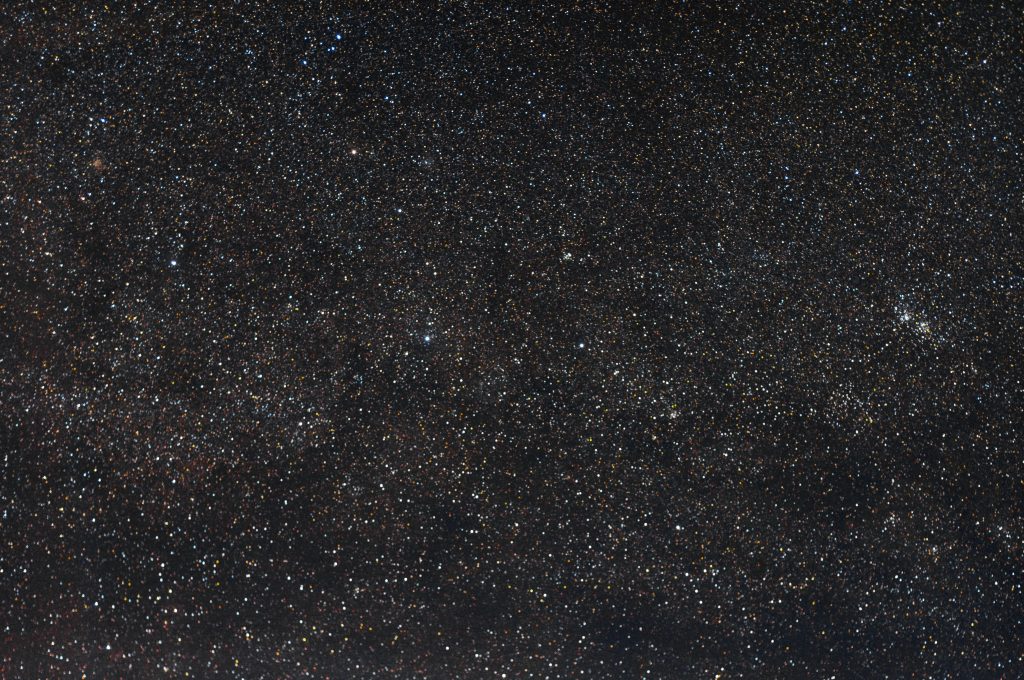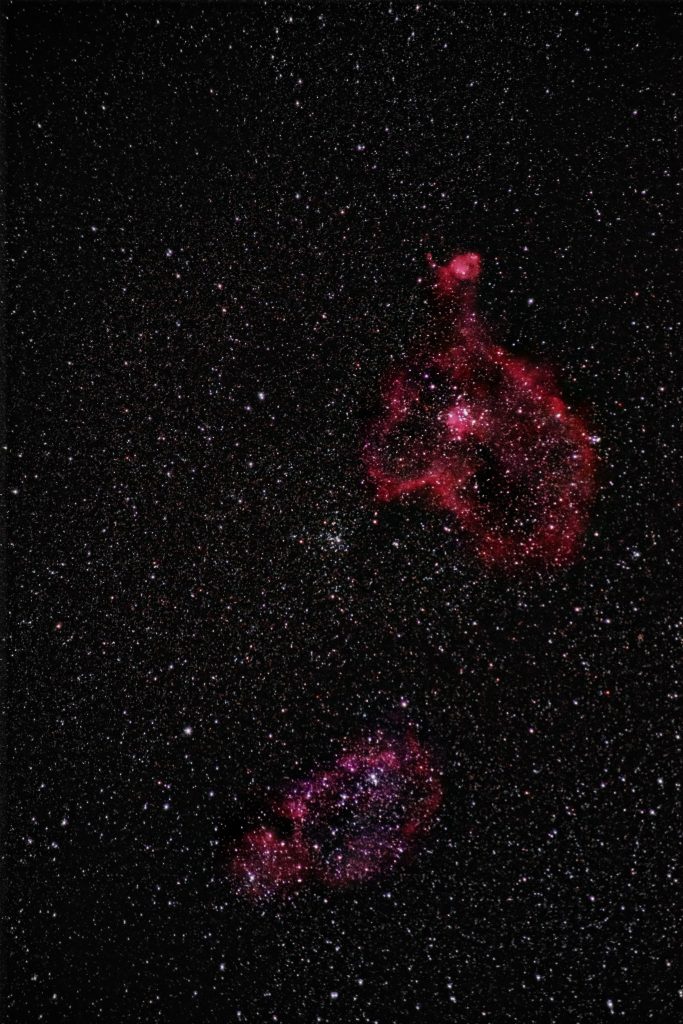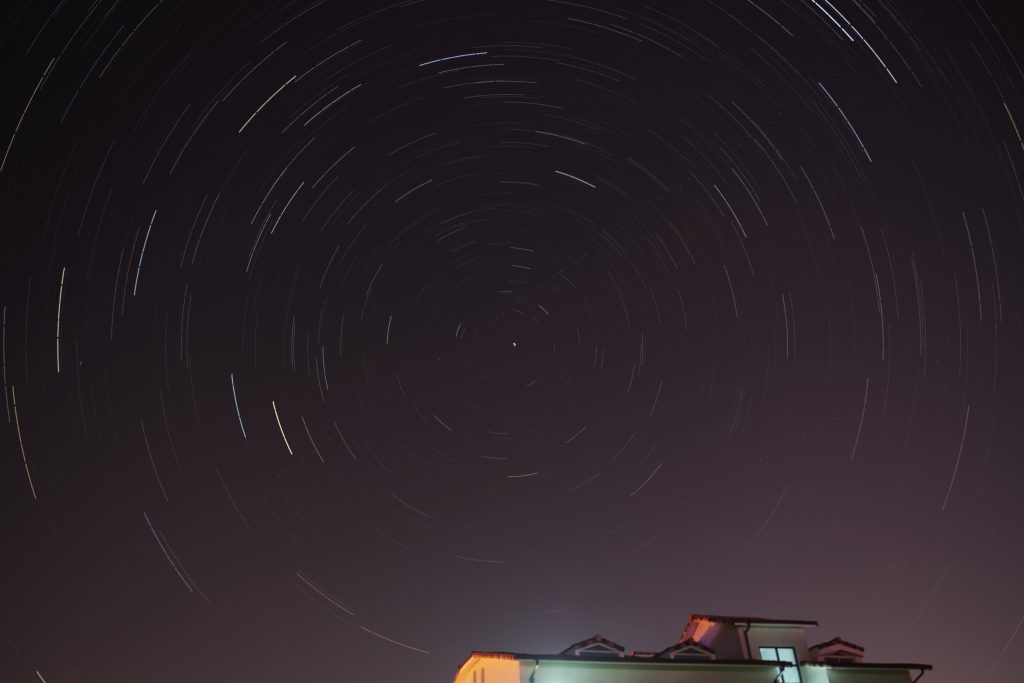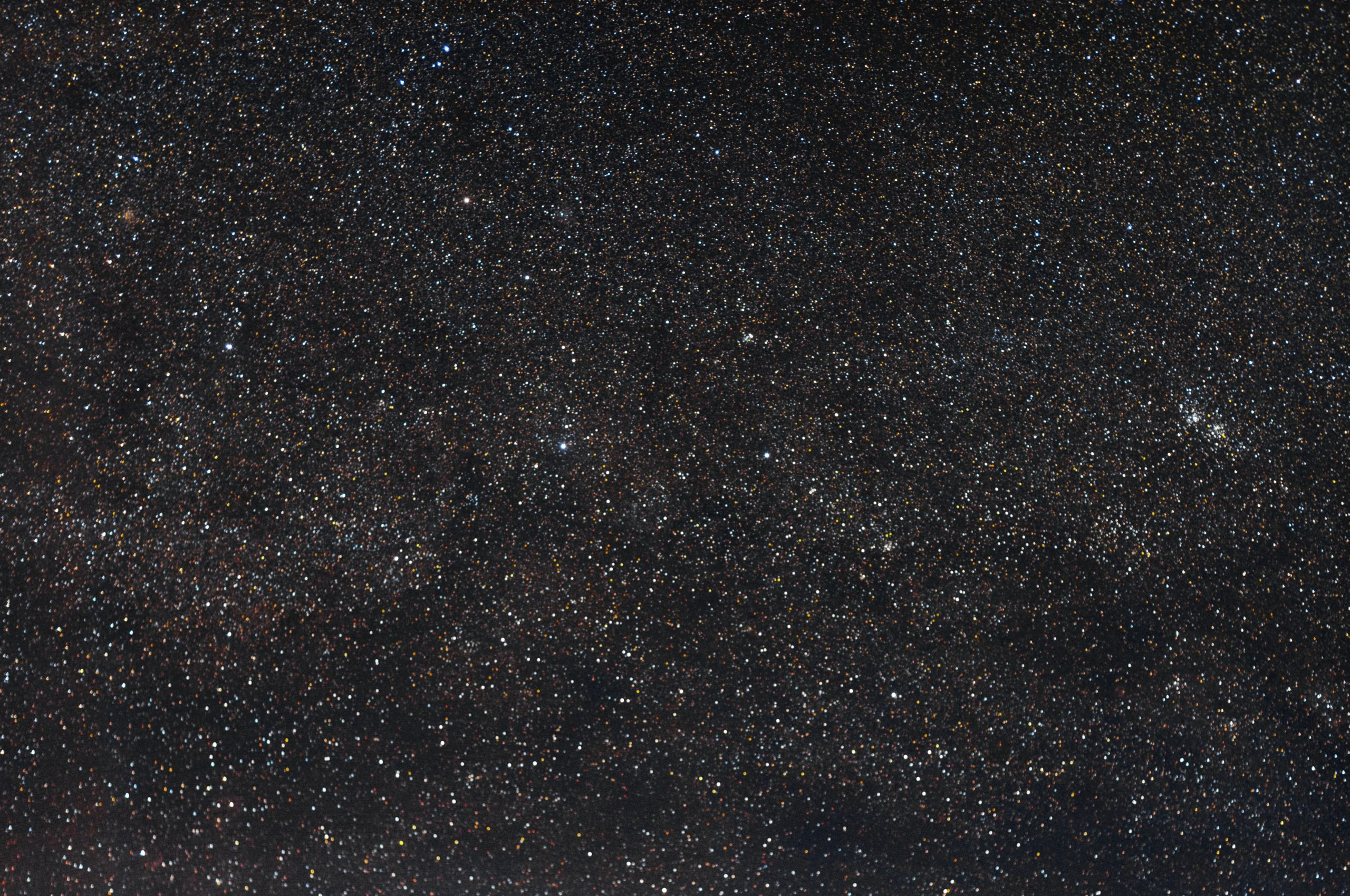To observe the Cassiopeia constellation with a telescope, start by finding a location with minimal light pollution. This will enhance your viewing experience and make it easier to spot the constellation. Once you’ve found a suitable spot, set up your telescope and adjust the eyepiece to the proper focal length. Then, search for Cassiopeia by referring to star charts or using a mobile app specifically designed for stargazing.
Once you’ve located Cassiopeia, you will notice a distinctive “W” or “M” shape formed by the constellation’s five brightest stars. Take your time to appreciate the beauty of this celestial wonder through your telescope. You may even spot other objects such as open star clusters, double stars, or galaxies within the boundaries of Cassiopeia. Enjoy your journey into the night sky and take advantage of the opportunity to explore the wonders of the Cassiopeia constellation with your telescope. Happy stargazing!
Finding Cassiopeia Constellation
If you’re interested in observing the Cassiopeia constellation with a telescope, you’re in for a treat! Cassiopeia is a prominent constellation in the northern hemisphere and is easily recognizable for its distinctive ‘W’ shape. In this article, we will guide you through the process of locating Cassiopeia, choosing the right telescope, preparing your telescope for observation, setting up your observation space, employing effective observing techniques, identifying stars and objects in Cassiopeia, recording and documenting your observations, and taking necessary safety precautions. So let’s get started!
Locating the North Star
Before we begin locating Cassiopeia, it’s important to find the North Star, also known as Polaris. The North Star is a crucial point of reference in the night sky, aiding in navigation and finding other celestial objects. To locate the North Star, start by identifying the Big Dipper, which is part of the Ursa Major constellation. Once you’ve found the Big Dipper, draw an imaginary line through the two stars at the end of the dipper’s bowl, pointing upwards. This line will lead you directly to the North Star.
Identifying the ‘W’ Shape
Now that you’ve found the North Star, locating Cassiopeia is a breeze. Cassiopeia is a constellation located near the North Star and is easily recognized by its ‘W’ shape. The ‘W’ shape is formed by five bright stars which make up the outline of Cassiopeia. Imagine connecting the dots of these stars to form a ‘W’ in the sky. This distinctive shape makes Cassiopeia stand out and is a helpful guide in finding the constellation.
Using a Star Chart
If you’re having trouble locating Cassiopeia or need assistance in navigating the night sky, using a star chart can be immensely beneficial. Star charts are maps of the night sky that help you identify and locate stars, constellations, and other celestial objects. There are numerous star chart apps and websites available that allow you to input your location and view accurate sky maps. Simply input your location and search for Cassiopeia on the interactive star chart to pinpoint its exact position in the night sky.
Choosing the Right Telescope
Now that you know how to find Cassiopeia, it’s time to choose a telescope that will enhance your celestial viewing experience. There are various types of telescopes available, each with its own advantages and considerations. Here are a few factors to consider when selecting a telescope:
Refractor Telescopes
Refractor telescopes use lenses to gather and focus light, offering crisp and detailed views of celestial objects. They are generally low-maintenance and suitable for beginners. Consider a refractor telescope if you’re looking for sharp images and ease of use.
Reflecting Telescopes
Reflecting telescopes use mirrors to collect and reflect light, providing brighter images of celestial objects. They are often more affordable and offer larger apertures, allowing for greater light-gathering capabilities. Reflecting telescopes are a popular choice among amateur astronomers.
Aperture Size
The aperture size of a telescope refers to the diameter of its primary lens or mirror. Larger apertures gather more light, resulting in brighter and more detailed images. Consider the size of the objects you wish to observe and the level of detail you desire when choosing the aperture size of your telescope.
Focal Length
The focal length determines the magnification and field of view of your telescope. Telescopes with longer focal lengths offer higher magnification but a narrower field of view, making them ideal for observing distant objects in detail. On the other hand, telescopes with shorter focal lengths provide a wider field of view but lower magnification, suitable for observing larger celestial objects or capturing expansive views of the night sky.
Mount Type
Choosing the right mount for your telescope is essential for stable and smooth tracking of celestial objects. There are two main types of mounts: alt-azimuth and equatorial. Alt-azimuth mounts allow for easy navigation and are suitable for beginners, while equatorial mounts offer precise tracking and are preferred by experienced observers interested in astrophotography.

Preparing Your Telescope
Once you have chosen the perfect telescope for observing Cassiopeia, it’s time to prepare it for use. Follow these simple steps to assemble and calibrate your telescope:
Assembling the Telescope
Carefully follow the manufacturer’s instructions to assemble your telescope. Ensure that all components are securely attached and aligned properly. Take your time to familiarize yourself with the different parts of the telescope, including the tripod, tube, and mount.
Aligning the Finder Scope
The finder scope is a small telescope attached to the main telescope, aiding in locating celestial objects. To align the finder scope, point your telescope towards a distant object during the day and adjust the finder scope’s alignment screws until the object is centered in both the finder scope and the main telescope’s eyepiece. This alignment will help you accurately locate stars and objects in the night sky.
Calibrating the Telescope
Before your first observation session, it’s essential to calibrate your telescope’s optics. This involves adjusting the focus and alignment of the mirrors or lenses to ensure clear and sharp images. Use the telescope’s controls to fine-tune the focus and tweak any necessary adjustments. Calibration ensures optimal performance and enhances your viewing experience.
Setting Up Your Observation Space
Creating the right observation space is key to enjoying the wonders of Cassiopeia. Here are a few tips to optimize your observation experience:
Finding a Dark Location
To observe celestial objects clearly, it’s important to find a dark location away from light pollution. Choose a spot that provides minimal artificial light interference, such as a remote field or a secluded area away from city lights. The darker the sky, the more visible the stars and objects in Cassiopeia will be.
Setting Up a Stable Tripod
A stable tripod is crucial for minimizing vibrations and ensuring steady views through your telescope. Set up your tripod on a flat and sturdy surface, ensuring it is level and secure. Take your time to adjust the tripod legs to the desired height, allowing for comfortable viewing through the eyepiece.
Reducing Light Pollution
Even in dark locations, ambient light from nearby sources can hinder your observation experience. To reduce light pollution, use a red flashlight or cover your regular flashlight with red cellophane. Red light helps preserve your night vision while minimizing disruption to the surrounding environment.

Observing Techniques
To make the most out of your Cassiopeia observation, employ these effective observing techniques:
Using Low Magnification
Start your observation of Cassiopeia with low magnification to get a wide-field view of the constellation. This will help you appreciate the entire ‘W’ shape and its surroundings. Lower magnification also aids in finding specific stars or objects within Cassiopeia, making it easier to navigate and explore.
Focusing Your Telescope
Achieving a sharp focus is vital for capturing the details of stars and objects in Cassiopeia. Take your time to adjust the focus knob on your telescope until the image becomes clear and crisp. Experiment with different focus settings to find the optimal balance between clarity and brightness.
Taking Your Time
Observing Cassiopeia is a journey, not a race. Take your time to explore the different stars and objects within the constellation. Allow your eyes to adapt to the darkness and gradually appreciate the beauty that unfolds before you. Patience is key when observing the wonders of the night sky.
Identifying Cassiopeia Stars and Objects
As you gaze at Cassiopeia through your telescope, take a moment to identify its stars and objects. Here are some tips for observing and exploring Cassiopeia in more detail:
Identifying Central Star of ‘W’
The central star of Cassiopeia’s ‘W’ shape is Epsilon Cassiopeiae. Use your telescope to focus on this star and observe its brightness and color. From there, you can trace the outlines of the ‘W’ and explore the neighboring stars within the constellation.
Exploring Other Stars in Cassiopeia
Cassiopeia boasts several notable stars, including Delta Cassiopeiae, Ruchbah, and Segin. These stars offer unique characteristics and visual appeal. Take your time to observe each star individually, noting any variations in brightness, color, or size. Exploring these stars adds depth to your Cassiopeia observation.
Finding Deep-Sky Objects
In addition to stars, Cassiopeia is home to various deep-sky objects that are worth exploring. The Heart Nebula, the Soul Nebula, and the Double Cluster are just a few examples of the breathtaking sights within Cassiopeia. By using higher magnification and taking longer exposures, you can capture the intricate details of these deep-sky objects and document their beauty.

Recording and Documenting Your Observations
To make the most of your Cassiopeia observation, it is essential to record and document your findings. Here are some methods to consider:
Note Taking
Keep a notebook handy to write down your observations, including the date, time, and specific details of what you observed. Note any notable features, changes, or comparisons you make. These notes will serve as a valuable reference and contribute to a comprehensive log of your observations.
Sketching
Sketching what you see through the telescope allows you to capture the finer details and nuances that may not be apparent in photographs. Practice sketching the stars, the ‘W’ shape, and any other objects you observe within Cassiopeia. Your sketches will serve as a personal visual record of your observations.
Using Astronomy Apps
In today’s digital age, astronomy apps can be incredibly helpful in documenting your observations. Many apps allow you to input your observations, mark specific objects, and even capture photos through your telescope. Explore different astronomy apps and find the one that suits your needs best.
Tips and Troubleshooting
As with any hobby, there are always tips and troubleshooting techniques to make your experience smoother and more enjoyable. Consider the following:
Patience and Persistence
Observing the Cassiopeia constellation, like any other celestial object, requires patience and persistence. There may be nights when visibility is hindered or when the conditions are not ideal. Don’t get discouraged; instead, seize every opportunity and keep an eye on the sky. With time and perseverance, you will witness the wonders of Cassiopeia.
Avoiding Light Pollution
Light pollution can greatly diminish your ability to observe the night sky. Whenever possible, choose a location away from bright lights, and make an effort to reduce light pollution in your surroundings. By doing so, you’ll be able to fully immerse yourself in the beauty of Cassiopeia.
Managing Telescope Maintenance
Regular maintenance and proper care of your telescope are essential for optimal performance. Keep your telescope clean, store it properly, and inspect its components regularly. This will ensure that your telescope remains in good condition and continues to provide you with clear and spectacular views of Cassiopeia.
Dealing with Weather Conditions
Weather conditions can greatly impact your observing experience. Keep an eye on weather forecasts and plan your observation sessions accordingly. Clear, cloudless nights offer the best visibility, so take advantage of these moments to observe Cassiopeia and other celestial wonders.
Safety Precautions
Observing the night sky with a telescope requires taking certain safety precautions. Prioritize your safety and that of your equipment with these measures:
Using Proper Eye Protection
When observing the night sky, it’s crucial to protect your eyes from the intense light emitted by stars and other celestial objects. Always use proper eye protection, such as astronomy-specific eyepieces or filters, to safeguard your vision.
Avoiding Nighttime Hazards
Ensure that your observing space is free from tripping hazards and obstacles that may cause accidents in the darkness. Secure your tripod firmly to prevent it from toppling over. Be cautious of the surroundings and use a red flashlight to navigate without compromising your night vision.
Taking Care of Your Equipment
Telescopes are delicate instruments that require careful handling and protection. Avoid exposing your telescope to extreme temperatures, moisture, or dust. Keep it covered when not in use and handle it with care to prevent any accidental damage.
Be Mindful of Wildlife
If you’re observing in a natural environment, be aware of local wildlife. Respect the habitats of animals and avoid disturbing them during your observation sessions. Observe from a safe and responsible distance to ensure the well-being of both the wildlife and yourself.
Enjoying the Beauty of Cassiopeia
Lastly, as you embark on your journey of observing Cassiopeia, take the time to truly appreciate the beauty of the night sky and the wonders it holds:
Taking in the Visual Spectacle
Allow yourself to be captivated by the celestial splendor of Cassiopeia. Observe the stars shimmering in the darkness, the intricate patterns they form, and the countless mysteries they represent. Immerse yourself in the awe-inspiring visual spectacle that Cassiopeia presents.
Learning the Mythology
Cassiopeia, like many other constellations, has its own fascinating mythology. Explore the ancient stories and legends associated with Cassiopeia, from tales of queens to celestial conflicts. Delving into the mythology adds another layer of appreciation for this celestial wonder.
Finding Inspiration
Observing Cassiopeia and the night sky can be a deeply inspiring experience. Let the awe and wonder foster your curiosity about the universe and fuel your desire to explore further. The beauty of Cassiopeia may inspire you to delve into astronomy, embark on new scientific endeavors, or simply embrace the sense of wonder and awe that the universe evokes.
In conclusion, observing the Cassiopeia constellation with a telescope can be a rewarding and enchanting experience. By following the steps outlined in this article, you will be well-equipped to find Cassiopeia, choose the right telescope, prepare your equipment, set up your observation space, employ effective observing techniques, identify stars and objects, record your observations, take necessary safety precautions, and truly appreciate the beauty that Cassiopeia offers. So grab your telescope, head outside on a clear night, and prepare to be mesmerized by the wonders of the night sky. Happy stargazing!











